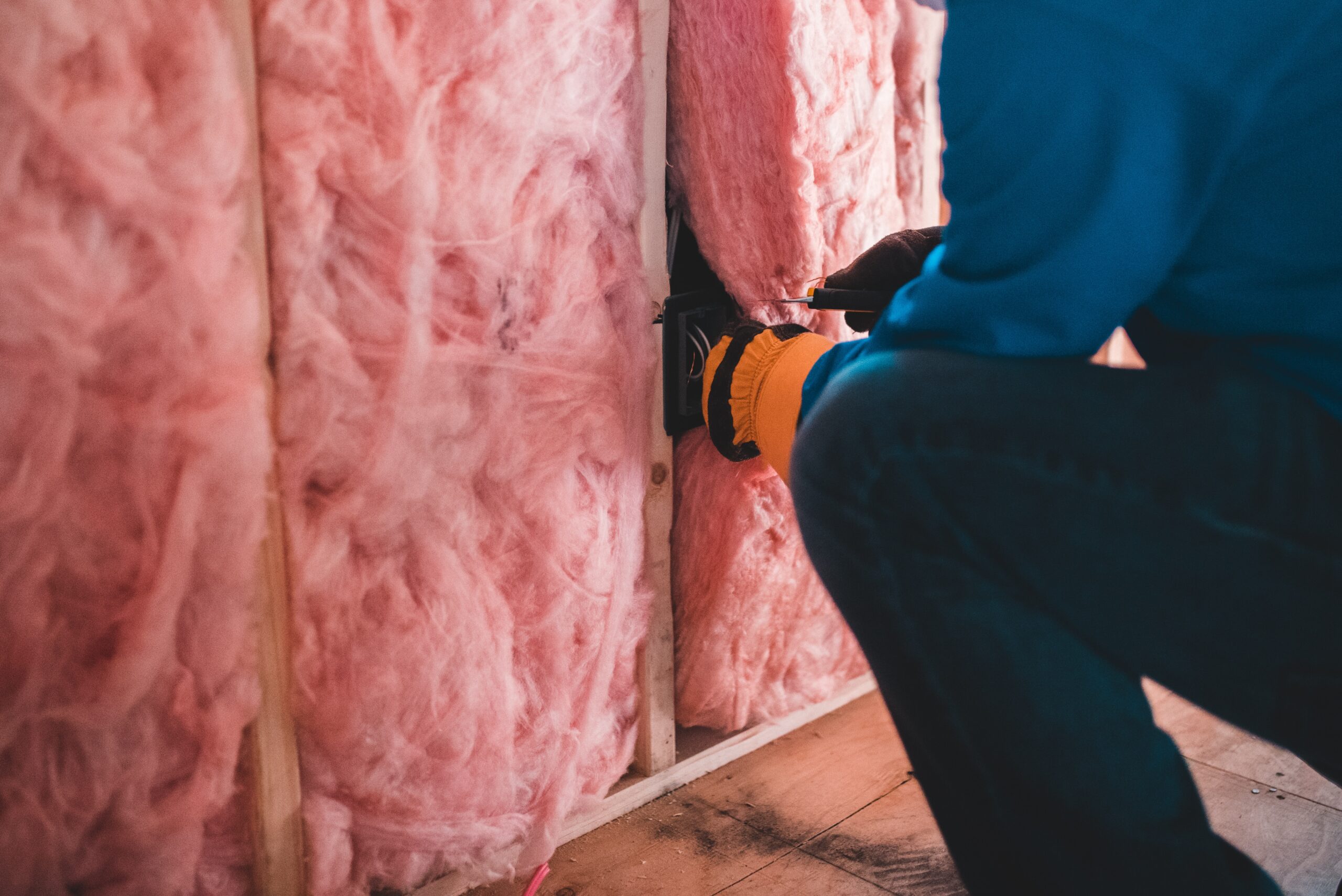
Hey there! Wondering if it’s possible to lay loft insulation over pipes? Well, you’ve come to the right place. In this article, we’ll explore the feasibility and potential benefits of insulating your loft while ensuring that your pipes remain in tip-top condition. So, if you’re looking to improve your home’s energy efficiency without compromising on pipe functionality, keep reading to find out if loft insulation is the way to go!
What is loft insulation?
Definition of loft insulation
Loft insulation refers to the process of insulating the space between the roof and the ceiling, commonly known as the loft or attic area. It involves the installation of materials that help to regulate and maintain the temperature in the living space below, providing thermal insulation and reducing heat loss. Loft insulation is an effective way to improve energy efficiency, reduce heating costs, and create a more comfortable living environment.
Purpose of loft insulation
The primary purpose of loft insulation is to prevent heat loss from the living space below through the roof. Heat naturally rises, and without proper insulation, a significant amount of warmth can escape through the roof, resulting in higher energy bills and a less comfortable home. Loft insulation acts as a barrier, preventing this heat loss and reducing the need for excessive heating. It also helps to keep the living space cooler during hot summer months by minimizing the transfer of heat from the roof to the interior.
Types of loft insulation materials
There are several types of materials used for loft insulation, each with its own unique properties and benefits. Common types include:
- Mineral wool insulation: This material, often made from glass fibers or rock wool, is flexible, easy to handle, and provides excellent thermal insulation. It is suitable for both pitched and flat roofs.
- Spray foam insulation: Spray foam insulation is applied by professionals and expands to fill the entire loft space, creating an airtight and highly efficient thermal barrier. It is particularly effective for irregularly shaped roofs and hard-to-reach areas.
- Cellulose insulation: This eco-friendly option is made from recycled paper and treated with fire retardants. It is blown into the loft space, providing good thermal performance and reducing heat loss.
- Reflective insulation: This type of insulation consists of a reflective foil or film that reflects radiant heat away from the living space. It is often used in combination with other insulation materials for added effectiveness.
- Board insulation: Rigid foam or fiberboard insulation panels can be installed directly onto the loft’s ceiling or roof, providing a high level of thermal insulation.
Each type of loft insulation material has its own advantages and considerations, so it’s important to consult with a professional to determine the best option for your specific needs and budget.
Challenges of insulating over pipes
Potential heat loss
When insulating the loft, one of the significant challenges is dealing with the presence of pipes that run through the space. If these pipes are not properly insulated, they can become sources of heat loss. Heat can escape from the pipes and dissipate into the loft, reducing the overall effectiveness of the insulation.
Air circulation and condensation
Insulating over pipes can also impact air circulation within the loft, potentially leading to condensation issues. Proper airflow is crucial for preventing the buildup of moisture, which can result in mold growth and structural damage. Insulating around the pipes must be done in a way that allows for sufficient airflow while still maintaining the desired level of thermal insulation.
Accessing and maintaining the pipes
Insulating pipes can make them more difficult to access and maintain. If there is a need for repairs or replacements, it may require removing or altering the insulation, which can be time-consuming and potentially expensive. It is important to consider the long-term accessibility and maintenance requirements before deciding on an insulation method.
Compliance with building regulations
Another challenge to consider is compliance with building regulations. There may be specific requirements and guidelines related to insulation and the insulation of pipes in your area. It is essential to consult local regulations and ensure that any insulation work is carried out in accordance with the applicable standards.

Methods for insulating over pipes
When it comes to insulating over pipes, there are several options to consider, each with its own pros and cons. The most suitable method will depend on factors such as the type and location of the pipes, accessibility, and personal preference.
Option 1: Rerouting the pipes
One option is to reroute the pipes in a way that avoids the need for insulation over them. This method involves repositioning the pipes, potentially altering their path or location to create a clear space for insulation. Rerouting the pipes can be a complex and labor-intensive process, often requiring professional plumbing assistance.
Pros of rerouting the pipes
- Eliminates the need for insulation around or above the pipes
- Provides a clear space for insulation, maximizing its effectiveness
- Can improve accessibility for future maintenance or repairs
Cons of rerouting the pipes
- Requires professional plumbing expertise and potentially significant modifications to the existing system
- Adds to the overall cost and time of the insulation project
- May not be feasible or practical in all cases, depending on the layout and structure of the property
Considerations before choosing this option
Before opting for rerouting the pipes, it is essential to consider the extent of the required modifications, potential disruption to the plumbing system, and the overall feasibility of the solution. Consulting with a professional plumber will help determine if this is a viable option for your specific situation.
Option 2: Insulating around the pipes
An alternative option is to insulate around the pipes, allowing the insulation to form a protective barrier while still maintaining airflow. This method involves carefully fitting insulation material around the pipes, ensuring a snug and secure fit without impeding airflow or compromising the insulation’s effectiveness.
Pros of insulating around the pipes
- Allows for the insulation of the loft space without rerouting the pipes
- Helps maintain proper airflow and reduce the risk of condensation
- Can be a more cost-effective solution compared to rerouting the pipes
Cons of insulating around the pipes
- Requires careful installation to ensure a proper fit and effectiveness
- May not provide as efficient insulation compared to rerouting the pipes
- Can be more challenging to access or maintain the pipes in the future
Considerations before choosing this option
When choosing to insulate around the pipes, it is crucial to select insulation materials that are suitable for this purpose and can be securely fitted. Consulting with a professional insulation installer can help ensure that the installation is done correctly and that the insulation meets the necessary thermal performance requirements.
Option 3: Insulating both above and around the pipes
A combination of the previous two options involves insulating both above and around the pipes. This approach provides comprehensive insulation coverage, minimizing heat loss and maintaining proper airflow. It requires careful coordination and installation of insulation materials to ensure efficient thermal performance.
Pros of insulating both above and around the pipes
- Provides maximum insulation coverage and reduces the risk of heat loss
- Maintains proper airflow and minimizes the potential for condensation
- Allows for better overall insulation performance
Cons of insulating both above and around the pipes
- Can be more complex and time-consuming compared to other options
- Requires careful planning and coordination to ensure proper insulation installation
- May add to the overall cost of the project, depending on the type and amount of insulation required
Considerations before choosing this option
Insulating both above and around the pipes requires precise measurement, selection, and installation of insulation materials. It is essential to consult with insulation professionals to determine the best combination of materials and ensure that the insulation is correctly installed for optimal performance.
Importance of professional installation
Regardless of the method chosen for insulating over pipes, professional installation is crucial to ensure the effectiveness and safety of the insulation. While it may be tempting to attempt a DIY installation, there are several reasons why seeking professional assistance is highly recommended.
Ensuring proper insulation coverage
Professional insulation installers have the knowledge and expertise to assess the specific requirements of your loft and pipes accurately. They can recommend and install the most suitable insulation materials to ensure proper coverage and thermal performance. Achieving a high level of insulation effectiveness requires precise installation techniques that professionals can provide.
Minimizing risks and damage to pipes
Improper insulation installation can lead to various risks, including damage to the pipes and increased risk of condensation and moisture buildup. Professional installers understand the potential risks and take the necessary precautions to protect the pipes and maintain proper airflow. This minimizes the chances of costly repairs or detrimental effects on the integrity of your plumbing system.
Compliance with safety regulations
Insulation work, including insulating over pipes, may be subject to specific safety regulations and building codes. Professional installers are familiar with these regulations and ensure that the insulation project meets all required standards. Compliance with safety regulations not only ensures the safety of you and your home but also helps with any potential insurance claims or assessments in the future.

Types of insulation suitable for pipes
When selecting insulation materials for pipes, it is essential to choose options that are suitable for the specific application. Different materials offer varying levels of thermal performance, ease of installation, and resistance to moisture. Some common types of insulation suitable for pipes include:
Flexible foam pipe insulation
Flexible foam pipe insulation, often made of polyethylene or neoprene, is a popular choice due to its versatility and ease of installation. It provides reliable thermal insulation, effectively preventing heat loss from the pipes. The foam material is flexible, making it easy to wrap around pipes of different sizes and shapes.
Fiberglass pipe insulation
Fiberglass pipe insulation consists of glass fibers covered with a durable jacketing material. It offers excellent thermal insulation and is resistant to moisture and damage. Fiberglass insulation is available in pre-formed tubes or rolls, making it convenient to install on pipes.
Polyethylene pipe insulation
Polyethylene pipe insulation is a cost-effective option that provides good thermal insulation properties. It is typically available in pre-formed tubes or rolls and is easy to install around pipes. Polyethylene insulation is resistant to moisture and helps prevent condensation on pipes.
Considerations for each type
When choosing insulation for pipes, consider factors such as the pipes’ size and shape, the desired level of insulation, and the surrounding environmental conditions. Consulting with insulation professionals can help determine the most suitable type of insulation for your specific pipe insulation needs.
Considerations for DIY installation
While professional installation is highly recommended for insulating over pipes, some individuals may still choose to undertake a DIY installation. If you decide to go this route, there are several important considerations to keep in mind.
Proper selection and handling of insulation materials
Ensure that you choose insulation materials that are suitable for pipe insulation and can withstand the environment they will be subjected to. Follow manufacturers’ instructions for proper handling and installation techniques to ensure optimal performance. Be mindful of any specific safety precautions recommended for the insulation materials you are using.
Ensuring correct installation techniques
Proper installation techniques are crucial for achieving effective insulation coverage and thermal performance. Take the time to carefully measure and fit the insulation around the pipes, ensuring a snug and secure fit without compressing or damaging the insulation. Pay close attention to any potential gaps or areas where insulation could be compromised.
Potential risks and limitations
DIY installation of insulation over pipes can come with certain risks and limitations. Improper installation may result in reduced insulation effectiveness, increased condensation, or damage to the pipes. It is important to assess your ability and expertise in insulation installation before attempting a DIY project. If in doubt or if the project is complex, it is best to consult with insulation professionals.

Conclusion
Insulating over pipes in the loft is an important consideration for optimizing energy efficiency and creating a comfortable living space. While it presents challenges such as potential heat loss, condensation concerns, and accessibility, there are various methods available to address these challenges.
Rerouting pipes, insulating around pipes, or a combination of both techniques are viable options, each with its own pros and cons. Careful consideration of factors such as pipe layout, accessibility, and personal preferences will help determine the most appropriate approach.
Professional installation is crucial to achieve proper insulation coverage, minimize risks, and ensure compliance with safety regulations. Insulation professionals have the expertise and knowledge to recommend and install the most suitable materials, preventing potential damage and maximizing insulation effectiveness.
When selecting insulation materials for pipes, options such as flexible foam, fiberglass, and polyethylene insulation offer different benefits and performance characteristics. Consulting with insulation professionals will help determine the most appropriate type of insulation for your specific pipe insulation needs.
For those considering a DIY installation, it is essential to understand the challenges and limitations of DIY insulation work. Proper material selection, correct installation techniques, and awareness of potential risks are crucial to achieving effective insulation coverage.
In conclusion, assessing the best approach for insulating over pipes in the loft requires careful consideration of multiple factors. Consulting with professionals, both for advice and installation, is essential to achieve optimal insulation coverage and ensure compliance with building regulations. Taking these steps will help create a well-insulated, efficient, and comfortable living space while minimizing energy costs and environmental impact.












